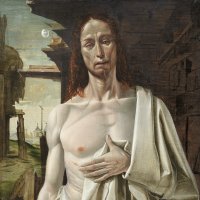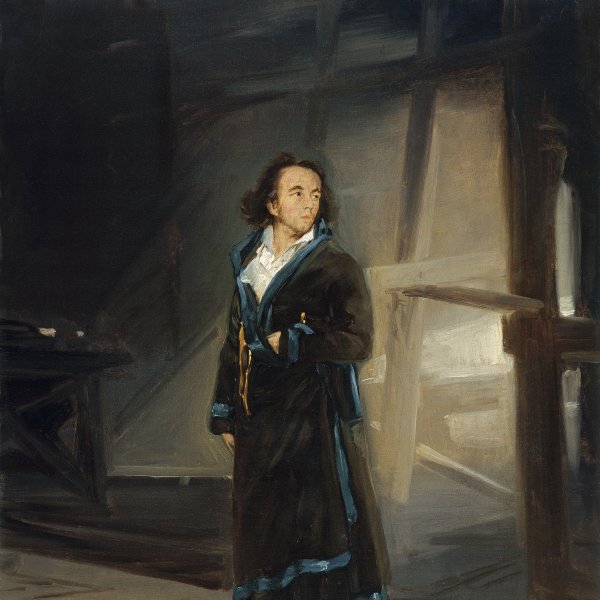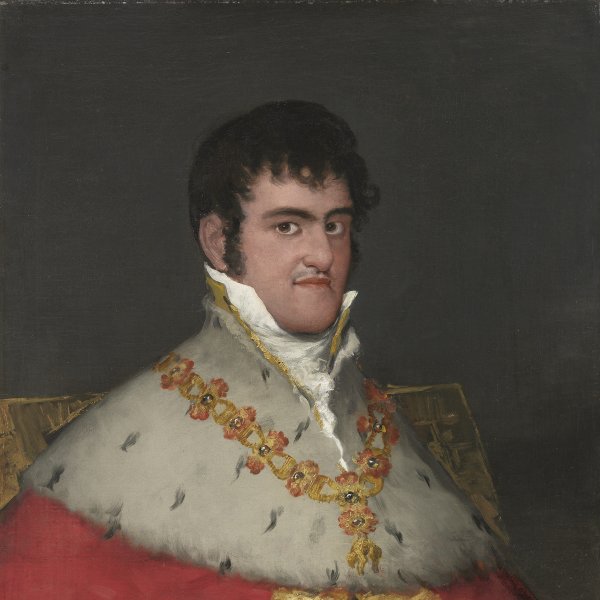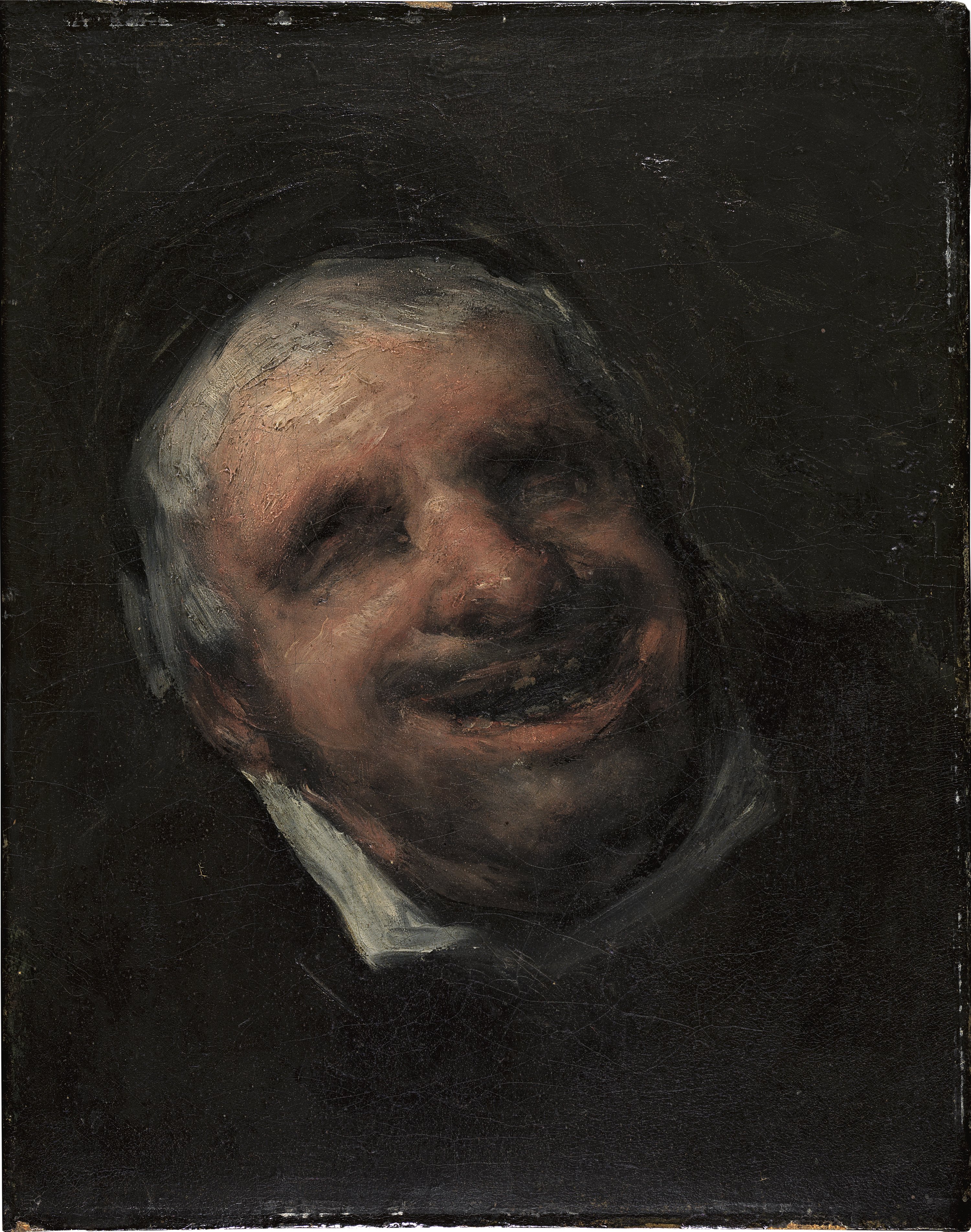El tío Paquete
ca. 1819 - 1820
Oil on canvas.
39 x 31 cm
Museo Nacional Thyssen-Bornemisza, Madrid
Inv. no.
165
(1935.8
)
Room 29
Level 2
Permanent Collection
The subject of this canvas can be identified from the inscription that was previously on the reverse and which read “El célebre ciego fijo” [The famous local blind man]. This inscription is known from written accounts and was lost when the canvas was lined after 1887. Tío Paquete was a well known blind man in Madrid who was to be found in the area of the church of San Felipe el Real and was known not only for his blindness but also for his skills as a singer and guitarist. Regarding its early provenance, the canvas belonged to Goya’s grandson Mariano Goya y Goicoechea. It was subsequently in the collection of the Count of Doña Marina, at which date it was included in an exhibition on Goya held in Madrid in 1900, organised by the Ministry of Public Education and Fine Arts. The painting was then in the collection of the Marquis de Heredia, its last known owner before it entered the Rohoncz collection in 1935.
It was included in the Collection’s catalogue of 1937 and between 1959 and 1960 was featured in the exhibition of works from the Collection held in Rotterdam and Essen.
On the grounds of its colour, technique and subject matter the canvas has been dated close to the time of the famous “Black Paintings”, executed for Goya’s house near the Puente de Segovia, Madrid, and known as the Quinta del Sordo. The house was purchased by Goya on 27 February 1819 and donated to his grandson Mariano on 17 September 1823. Now in the Museo del Prado, the fourteen mural paintings that adorned the walls of this two-storey structure were removed and transferred to new supports by Salvador Martínez Cubells, at that point the Prado’s restorer, on the instructions of Baron Émile d’Erlanger, owner of the house in the latter part of the 19th century.
Goya here focuses all our attention on the figure’s broad, round face that powerfully emerges from the dark background, occupying almost all the picture space. The head is tilted to one side and is painted with heavy impasto and a markedly free type of brushstroke that creates the details of this fantastical but realistically depicted character through broad patches of pigment. This realism, which borders on crudeness, extends to the figure’s sightless eyes that can just be made out through his almost closed eyelids. This rigorously objective presentation is also evident in the stubby nose with its large nostrils, thick, coarse lips and almost toothless mouth. Seemingly presented as laughing ironically, Tío Paquete’s head with its blurred features and ambiguous expression is an important example of Goya’s final style. It can be compared to one of the women in the canvas entitled Two Women and a Man, from the “Black Paintings”, although that figure’s expression and laughing face are more disturbing than the present image.
Mar Borobia
On the grounds of its colour, technique and subject matter the canvas has been dated close to the time of the famous “Black Paintings”, executed for Goya’s house near the Puente de Segovia, Madrid, and known as the Quinta del Sordo. The house was purchased by Goya on 27 February 1819 and donated to his grandson Mariano on 17 September 1823. Now in the Museo del Prado, the fourteen mural paintings that adorned the walls of this two-storey structure were removed and transferred to new supports by Salvador Martínez Cubells, at that point the Prado’s restorer, on the instructions of Baron Émile d’Erlanger, owner of the house in the latter part of the 19th century.
Goya here focuses all our attention on the figure’s broad, round face that powerfully emerges from the dark background, occupying almost all the picture space. The head is tilted to one side and is painted with heavy impasto and a markedly free type of brushstroke that creates the details of this fantastical but realistically depicted character through broad patches of pigment. This realism, which borders on crudeness, extends to the figure’s sightless eyes that can just be made out through his almost closed eyelids. This rigorously objective presentation is also evident in the stubby nose with its large nostrils, thick, coarse lips and almost toothless mouth. Seemingly presented as laughing ironically, Tío Paquete’s head with its blurred features and ambiguous expression is an important example of Goya’s final style. It can be compared to one of the women in the canvas entitled Two Women and a Man, from the “Black Paintings”, although that figure’s expression and laughing face are more disturbing than the present image.
Mar Borobia








